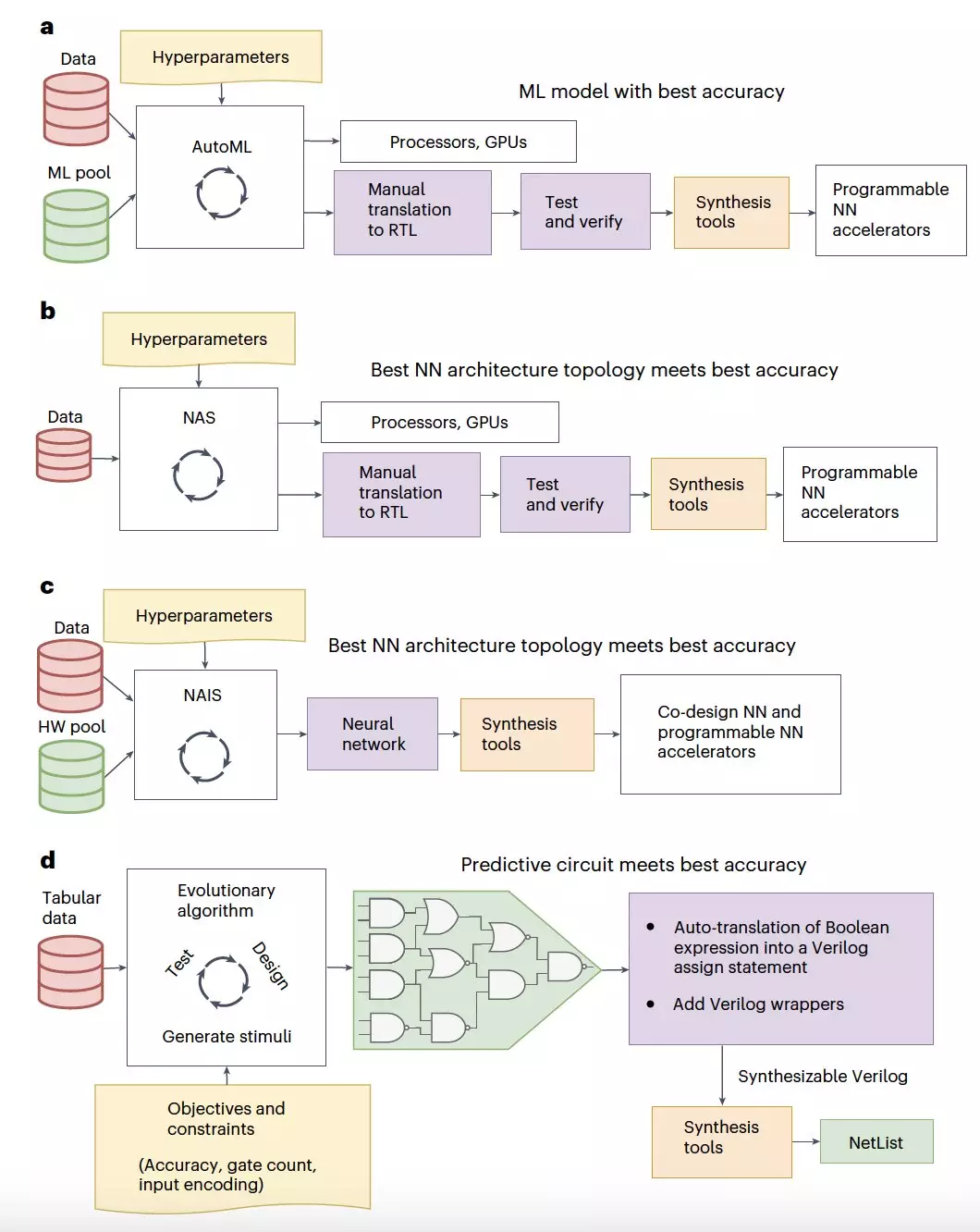In recent years, advancements in deep learning techniques have led to remarkable achievements in various tasks such as image classification and natural language processing. The rise in the use of these techniques has spurred research into developing hardware accelerators that can meet the computational demands of deep neural networks. These accelerators are specialized computing devices designed to handle specific tasks more efficiently than traditional CPUs. While the focus has been on developing accelerators separately from training and executing deep learning models, a few research teams have taken on the challenge of integrating these two aspects.
Researchers from the University of Manchester and Pragmatic Semiconductor have introduced a groundbreaking approach to automatically generate classification circuits from tabular data. This unstructured data combines numerical and categorical information, posing a challenge for traditional machine learning models. The team’s proposed method, known as “tiny classifiers,” aims to streamline the circuit generation process for efficient classification.
The tiny classifier circuits created by the team consist of only a few hundred logic gates, yet they deliver accuracy comparable to state-of-the-art machine learning classifiers. By leveraging an evolutionary algorithm to search for an optimal configuration of logic gates, the researchers were able to maximize prediction accuracy while minimizing resource consumption. This innovative approach represents a significant breakthrough in the field of hardware-accelerated machine learning.
Through extensive simulations and real-world validation on a low-cost integrated circuit (IC), the researchers demonstrated the effectiveness of their tiny classifiers. Not only did these circuits exhibit impressive accuracy, but they also consumed significantly less power and occupied less area compared to conventional machine learning baselines. The potential applications of these tiny classifiers extend to a wide range of tasks, such as triggering circuits in smart packaging systems and the development of cost-effective near-sensor computing solutions.
The development of tiny classifiers represents a major advancement in the field of machine learning, offering a more efficient and resource-friendly approach to classification tasks. The innovative methodology introduced by the research team opens up new possibilities for implementing machine learning models in real-world applications. As further research is conducted and improvements are made, tiny classifiers have the potential to revolutionize how we approach complex computational tasks in various domains.


Leave a Reply
You must be logged in to post a comment.